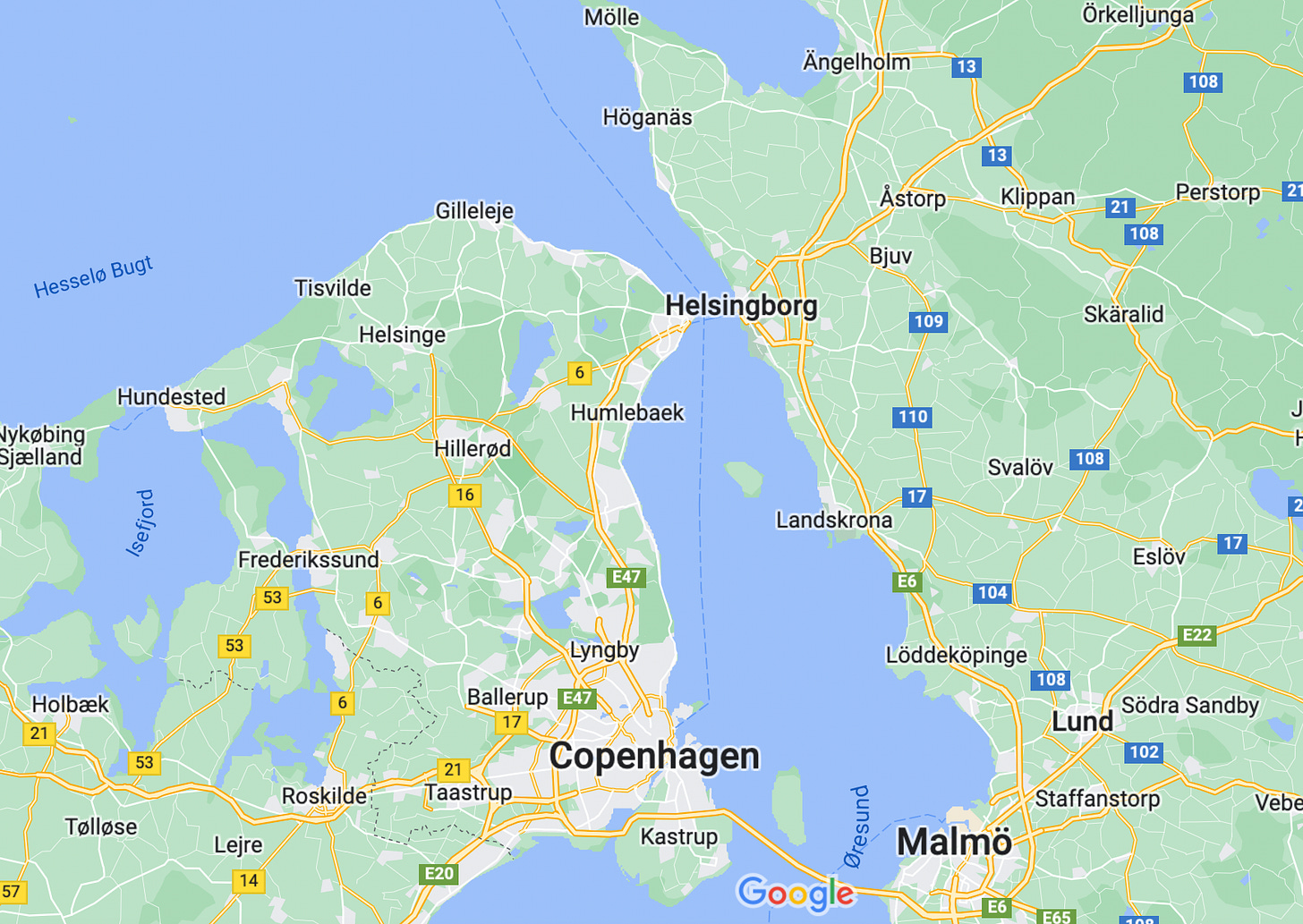When customers regulate themselves
It’s Denmark, 400 years ago. Fully two-thirds of the country’s national income comes from one source: taxing shipping in the Baltic Sea. This is enforced very easily because every vessel passes through the narrow neck where Helsingor is located (with Helsingborg, in Sweden, on the opposite shore).
Here, officials board and value each item, which they tax at 1 - 2%.
But this was slow, and led to inevitable arguments, so they came up with a method that eliminated labour (and dispute) altogether: they simply asked ship captains to state the value of their cargo.
So what prevented captains from understating the value, and hence underpaying tax?
Their brilliant tactic was this: the Danish state had the right to buy the cargo for whatever value the captain assigned. This meant that captains had to do a calculus as follows: “What’s the lowest value that’s high enough for them not to want to buy it?”
It’s just like we do with kids sharing cake: one cuts it, the other one gets to choose.
This remarkably successful example of behavioural economics remained in place for over 400 years, and only was eliminated when free trade routes were negotiated internationally in the 1850s.
Question: How can you design a system where stakeholders' self-interest naturally aligns with your desired outcomes.?
Customer retention, or customer resentment?
A recent battle with an unrepairable iPhone had me thinking about a thorny challenge facing many of us: how do we balance legitimate control over our products or services with customer autonomy?
My iPhone’s on-off side switch was jammed, preventing me from clicking to make purchases. It’s out of warranty (yet another high-tariff Apple product), so I took it to my local hole-in-the-wall phone repairer. An owl-like man toggled the switch for two seconds before he pronounced, “I can’t do this. I would have to open the phone and I’d damage the screen for sure. Apple make it very difficult”.
I’ve since discovered that this is a strategy that not just Apple, but numerous companies use to maximise ongoing customer ‘loyalty’ (read, money spent). Other examples are Epson (try refilling your own ink cartridges) and John Deere (farmers are up in arms, globally, about their inability to fix their own tractors).
There’s an entire ‘right to repair’ movement, in the US, in Europe, and even in Australia, that is aiming to reverse this stranglehold that companies have over the users of their products. It’s a literal arms race, with hackers putting downloadable software onto online farming forums, as fast as John Deere can close the gap with increasingly sophisticated security features.
Question: Do you ever create technical restrictions, instead of superior value, in an effort to keep customers locked in?
The most valuable questions a director can ask
For years, I’ve had clients coming to me with variations of this request: “Andrew, we need our board (or our executives) to think more strategically”.
When I’d respond with, “What does ‘thinking strategically’ mean?” I was mostly met with blank stares, or this: “Well, it means not thinking operationally”. Now, with over 25 years as a strategy consultant, I’ve met many great strategists, and what I’ve noticed is they invariably have three types of ‘sight’:
Foresight: The ability to see ‘beyond the horizon’ and anticipate opportunities and potential disruptors to their business before they occur. Ideally, they can then disrupt themselves before external circumstances do.
Insight: The ability to drill deeply into the experience of clients / customers and link to this the minimum / maximum viable services they can provide.
Oversight: The ability to interpret results / data to track performance against expectations, and inform decision-making while protecting their organisation against risks.
The bottom line is this: Strategic thinking isn't just "non-operational" thinking—it's a specific quality of ‘sights’ that can be developed and measured. The most effective leaders consistently demonstrate strength across all three dimensions by asking great questions.
In fact, if you’re interested, click the button below and you can immediately get a list of the 12 best questions board directors should ask, with my compliments.
Question: Which of these three capabilities needs the most development in your organisation?
If you’re an occasional or regular reader of 5MSM, you know that I love knowing you’ve enjoying reading, so please click the ‘heart’. And, drop me a line, either below, or by clicking the ‘chat’ button just here.
In the meantime, enjoy your week, and I look forward to being with you again next Friday.
Andrew






Appreciate the clean articulation of the three 'sights', and can see the importance of all need being in play ongoingly.
Thanks for the sheet of questions. Always helpful! Ros